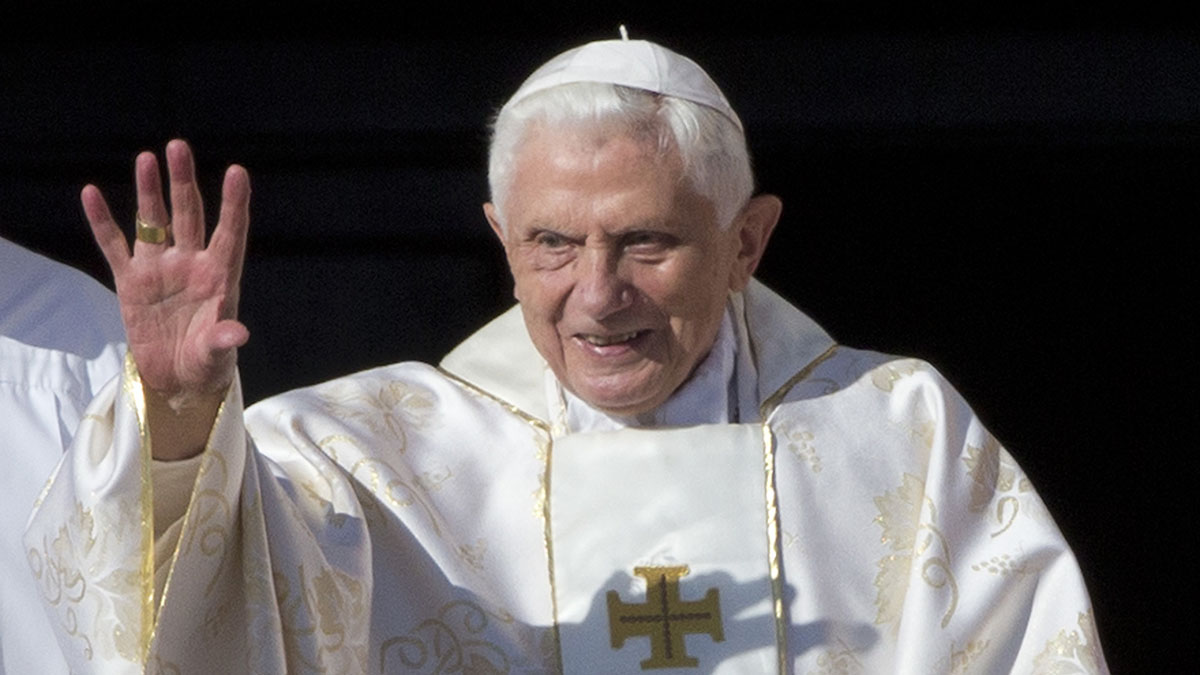
The former Pope Benedict XVI, born Joseph Aloisius Ratzinger, whose resignation as the head of the Catholic Church rocked the world, has died. He was 95, the Vatican informed Saturday morning.
A statement from Vatican spokesman Matteo Bruni on Saturday morning said that: “With pain I inform that Pope Emeritus Benedict XVI died today at 9:34 in the Mater Ecclesia Monastery in the Vatican. Further information will be released as soon as possible.”
The Vatican said Benedict’s remains would be on public display in St. Peter’s Basilica starting Monday for the faithful to pay their final respects. His funeral will be celebrated on Thursday, Jan. 5th in St. Peter’s Square.
Benedict’s papacy began April 19, 2005, three weeks after the death of Pope John Paul II, and ended with his being the first pope since Pope Gregory XII in 1415 to resign. His eight years as pope will best be remembered for the sex abuse scandal that finally came to light after more than 20 years of denial by church leaders, including Benedict himself.
As head of the Prefect of the Congregation for the Doctrine of the Faith from 1981 until he became pope in 2005, Ratzinger was in charge of all investigations into allegations of sexually abusive priests. Though he made many changes to canon law in an effort to crack down on abusers, he was widely criticized for his inaction and obstruction.
In some cases he waited years before investigating allegations or simply moved abusive priests from one city to another, and defended the church’s right to keep evidence confidential for 10 years after alleged victims reached adulthood.
But in a papal first, Benedict in 2010 met with victims and wrote an eight-page letter in which he apologized to Irish Catholics.
“You have suffered grievously, and I am truly sorry,” the pope wrote. “Your trust has been betrayed and your dignity has been violated.”
Ratzinger was born and baptized on Holy Saturday, April 16, 1927, and as a boy lived in Traunstein, Germany, a small village near the Austrian border. A teenager at the outset of WWII, in 1941 Ratzinger was automatically enrolled into the Hitler Youth, per the policy of his school.
Pope Benedict XVI’s Papacy in Photos
Ratzinger would spend two years as a member of the Nazi youth group before being drafted and serving with an anti-aircraft unit that guarded a BMW plant outside Munich. He would eventually desert the army and return home, before being captured by American troops and held for several months in a POW camp.
Looking back on WWII, Ratzinger cited the Roman Catholic Church as “a citadel of truth and righteousness against the realm of atheism and deceit.” His experience with the Nazis, who forbade Catholic worship, only served to push him closer to his faith. In 1946 he began studying philosophy at the University of Munich, eventually receiving ordination in 1951.
Throughout the ’50s and ’60s, Ratzinger rose through the ranks of the church, serving as an advisor to the Archbishop of Cologne. Pope Paul VI later named him Archbishop of Munich and Freising in 1977, before promoting him to Cardinal later that same year.
Ratzinger would serve as a member of the conclaves that elected both Pope John Paul I and II, the latter naming him Prefect of the Congregation for the Doctrine of the Faith.
It was as head of the CDF, whose mission is “to promote and safeguard the doctrine on faith and morals in the whole Catholic world,” that he earned the nickname “God’s Rottweiler,” for his ferocious defense of traditional church values.
As pope, Benedict made great inroads in modernizing the Catholic Church by talking about climate change and installing solar panels at the Vatican, as well as launching papal Twitter, Facebook and YouTube accounts.
But he also aroused criticism for remaining steadfastly opposed to homosexuality, the ordination of female priests and allowing priests to wed.
In February 2013, the day after Benedict told the world he would be stepping down, the Vatican revealed that he had had a pacemaker implanted a decade ago, but Greg Burke, the Vatican’s senior communications adviser, said it didn’t play a part in his decision.
“You don’t resign because you have a pacemaker or because you have a new battery for a pacemaker,” Mr. Burke said.
In announcing his resignation from the Vatican, the 85-year-old pope told a church council, “I have come to the certainty that my strengths, due to an advanced age, are no longer suited to an adequate exercise of the Petrine ministry.”
Benedict’s reign officially ended at 8 p.m. Rome time on Feb. 28, 2013.
Stay connected with us on social media platform for instant update click here to join our Twitter, & Facebook
We are now on Telegram. Click here to join our channel (@TechiUpdate) and stay updated with the latest Technology headlines.
For all the latest For Top Stories News Click Here
